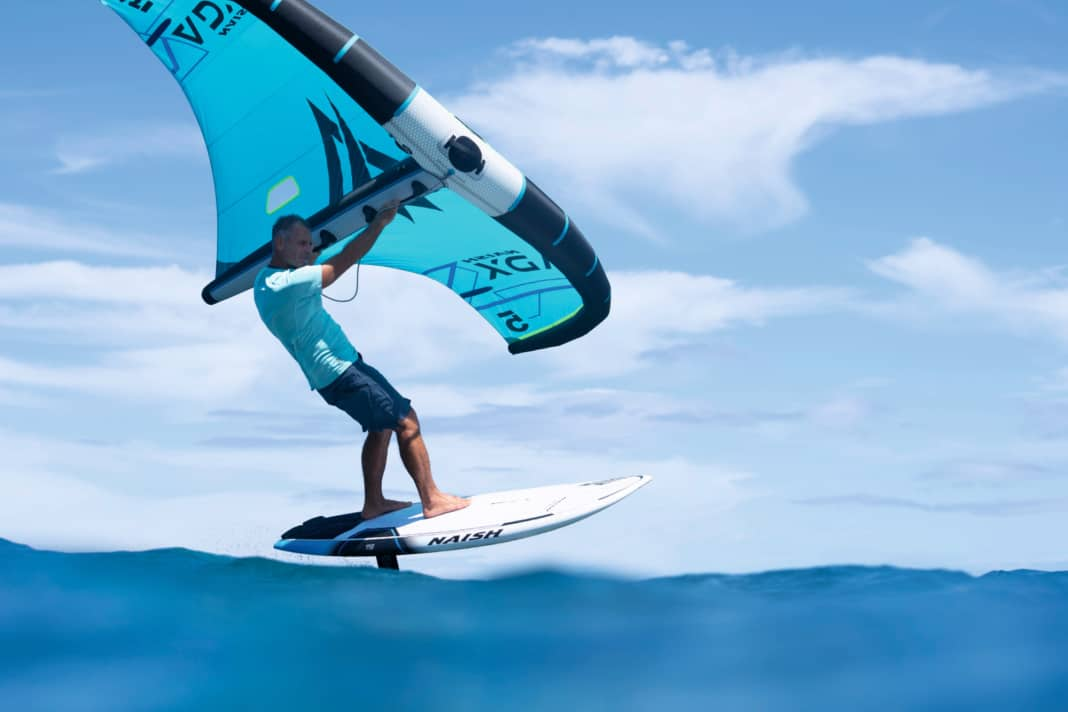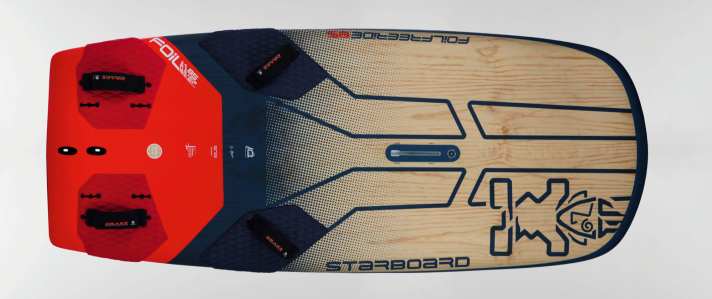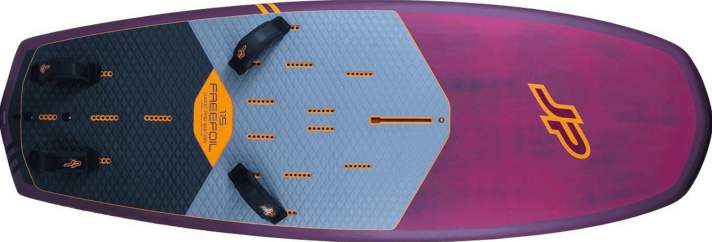Wing and windsurfing buying advice: The right material for foil beginners






Wing-Foil
The size of the boot into which the boards have to fit often decides between inflatable boards and hardboards. The smaller the boards get - hardboards are often less than 1.60 metres long for more experienced riders - the more the advantage of inflatables is lost. What's more, hardboards are noticeably more direct and take off more easily and a little earlier in light winds. Inflatable boards offer a lower risk of injury when falling onto the board. Because inflatables are more wobbly in the water, you should allow for an additional 10 to 20 litres of volume. An entry-level board is at least 5'5'' (1.64 m) long. Large hybrid boards, which are even suitable for wave SUPing, can be up to 8'2'' (2.49 m) long. These are then very easy to launch and stable in flight, but also appear very large and sluggish in the air and are mainly suitable for relaxed foil cruising with the wing.
Nevertheless, you should plan enough volume for your first board (body weight plus 40 to 60 litres): This will speed up your career, and after a good year of learning you can then immediately make a significant step towards much less volume - when jumping manoeuvres come into play - or you can simply continue with enjoyable cruising and casual planing manoeuvres. The beginner foil will probably remain for a longer time in light winds. A carbon foil mast may be classy and a little "better" in all respects, but it also costs many times more - and aluminium masts are just as much fun in the long term. With the foil, the surface area counts more than the "aspect ratio" - whether the wing is rather stretched or rather very squat makes little difference in the first attempts, a "medium ratio" with wingspans between 80 and 100 centimetres has proven itself.
Board size
Volume: Body weight plus 40 to 60 litres - depending on your sense of balance. For inflatable boards plus a further 10 to 20 litres, because they are more wobbly. Length: from at least 5'5'' or longer.
Foil size
For predominantly light winds: approx. 1500 cm2 for 60 kilos, approx. 2000 cm2 for 85 kilos. For winds from around 15 knots: 1200 cm2 (60 kg) to 1400 cm2 (85 kg).
Mast length
75 centimetres is a good universal size for beginners, shorter masts (approx. 60 cm) only for shallow waters. For sporty, fast foiling or wavy areas, 80 to 85 cm provide the necessary ground clearance. These long masts also have hardly any disadvantages when learning.
Fuselage length
The fuselage is the stabiliser: 70 cm offers beginners very good riding stability, shorter than 65 cm the foil becomes more agile (more nervous) and more manoeuvrable for advanced riders.
Windsurf Foil Freeride
Even as a foil beginner, you should ideally know your future "style". Depending on your choice of material, you can either continue to foil in a relaxed and manoeuvre-oriented manner with small sails (four to six square metres), combined with larger foils (1200 to 1600 cm2) - or in a more performance-oriented manner, with large sails between six and eight square metres, with smaller front wings (800 to 1100 cm2) on the foil. Smaller wings require more speed before take-off and become faster afterwards. The following applies to the board: the wider, the easier. This is because width provides stability and safety - even in manoeuvres. This is why freeride or freerace boards with an additional foil option with a reinforced fin box are only suitable for foiling from around 125 litres and 75 centimetres wide.

Pure foil boards have a significantly wider tail than fin boards, which provides a good counterbalance to the foil forces. Both concepts are well suited to learning, with boards from around 80 centimetres wide and with a wide tail making it noticeably easier to get started. Even if short boards (under 2.00 metres) give the experienced foiler a very compact flight feeling, boards around 2.10 to 2.15 metres make take-off easier and are also less bitchy when catching up with the sail or tacking.
Board size
The volume should be chosen so that the sail can be caught up easily in light winds. At 80 kilos, this means from around 120 litres. A width of at least 75 to around 85 centimetres is recommended for sails of five to eight square metres.
Foil size
For underpowered foiling with rather small sails, light people (under 65 kilos) need around 1200 cm2 for an early take-off; at 90 kilos, a foil with 1400 to 1600 cm2 is also acceptable. If you also choose a sail size with noticeable power on the foil, you can go for a foil with 1100 cm2 at 85 kilos. For light surfers under 65 kilos, 800 cm2 is enough for an early take-off.
Mast
80 to 90 centimetres offer enough space under the board and don't seem frighteningly high even at maximum flight level. The price difference between aluminium and carbon does not correspond proportionally to the gain in performance or riding feel. Aluminium masts of 85 centimetres also work very well.
Fuselage length
The fuselage is the stabiliser: at least 85 cm in length offers beginners good riding stability, shorter than 80 cm the foil becomes more nervous, especially in the transverse axis (up and down). From 100 cm, the foil becomes noticeably bulkier to carry.
Hybrid boards

Equipped with all the strap options and the necessary boxes (additional weight), they are ideal for testing out windsurf foiling and wing foiling - if you are not yet sure where you want to go on your foil journey. These boards are inevitably too long for dedicated wingsurfing due to the windsurfing requirements.

